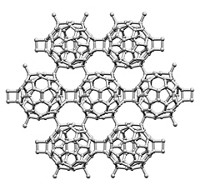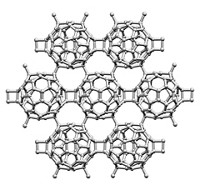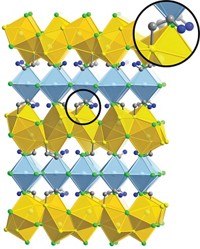Advertisement
Grab your lab coat. Let's get started
Welcome!
Welcome!
Create an account below to get 6 C&EN articles per month, receive newsletters and more - all free.
It seems this is your first time logging in online. Please enter the following information to continue.
As an ACS member you automatically get access to this site. All we need is few more details to create your reading experience.
Not you? Sign in with a different account.
Not you? Sign in with a different account.
ERROR 1
ERROR 1
ERROR 2
ERROR 2
ERROR 2
ERROR 2
ERROR 2
Password and Confirm password must match.
If you have an ACS member number, please enter it here so we can link this account to your membership. (optional)
ERROR 2
ACS values your privacy. By submitting your information, you are gaining access to C&EN and subscribing to our weekly newsletter. We use the information you provide to make your reading experience better, and we will never sell your data to third party members.
Materials
Organic crystals designed for flexibility
Harnessing weak interactions between molecular building blocks could be a design strategy for organic electronic materials or pharmaceutical additives
by Melissae Fellet
August 16, 2016

Crystalline materials, like diamonds or gemstones, are typically hard and brittle. But crystals made of orderly arrangements of organic molecules can be flexible. Although most such crystals have been discovered serendipitously, now researchers have designed organic molecules that form flexible crystals through weak interactions between repeating building blocks (J. Am. Chem. Soc. 2016, DOI: 10.1021/jacs.6b05118). This design principle could be applied to engineer materials for organic solar cells and light-emitting diodes, or as additives to ease pharmaceutical manufacturing, the researchers say.
Little is known about how the structure of organic crystals determines their mechanical properties. But C. Malla Reddy of the Indian Institute of Science Education & Research Kolkata and his colleagues started with one known principle: Under mechanical stress, weak connections easily break and reform, sometimes allowing a material to bend without breaking. Harnessing the power of weak interactions, they designed three classes of organic molecules to form different flexible crystals.

One such class used building blocks of naphthalene diimides with spherical methyl or t-butyl groups on either end. The aromatic rings in the center of each building block stack one on top of the other to form one dimension of the crystal. Meanwhile, these stacks interact side-to-side through weak, short-lived electrostatic attractions between the alkyl groups. These interactions create planes running through the crystal where the layers can slide past each other when the crystal is bent. Reddy compares this sliding motion to sheets of paper slipping past each other in a bent notepad. Using this flexibility, the researchers could shape the microscopic crystals into letters of the alphabet.
For the second class of molecules, the researchers used substituted benzoic acid building blocks held together in one direction with relatively strong hydrogen bonds, commonly used for linking building blocks in crystal engineering. In the other dimension, weak halogen-halogen interactions between chlorine or bromine atoms at the ends of these building blocks created the slipping layers that produced flexibility within this crystal.
The researchers made the third class of building blocks out of o-vanillin joined to anilines substituted with halogens or alkoxy groups. This class of molecules forms crystals that change color when illuminated or that propel themselves off a surface when heated—properties that could be useful for applications like optical memory or mechanically active materials. In this case, weak interactions between alkoxy and halogen groups created the slip.
A lot of chemical insight is required to produce crystals that can be bent into letters, says Gautam R. Desiraju of the Indian Institute of Science. He calls this an “ideal study” of crystal engineering, in that the researchers used their understanding of how the molecules in a crystal affect its structure and physical properties to design and build the crystal.
Reddy hopes other researchers apply weak interactions to designing flexible organic semiconducting molecules or substances to aid pharmaceutical production. When making medicines, active ingredients are often combined with excipient materials as part of the formulation and manufacturing process. But if an excipient makes a powder too brittle, it can break when stirred, creating inconsistent product. Flexible crystals could help solve this problem, Reddy says.





Join the conversation
Contact the reporter
Submit a Letter to the Editor for publication
Engage with us on Twitter